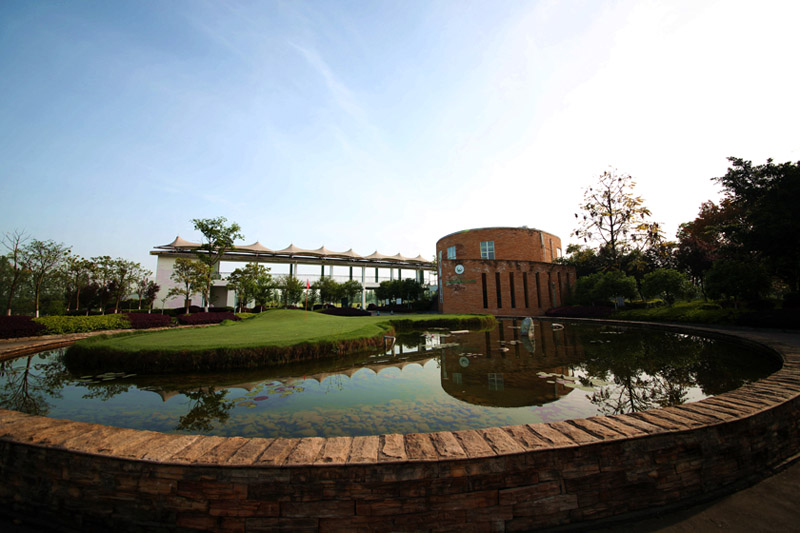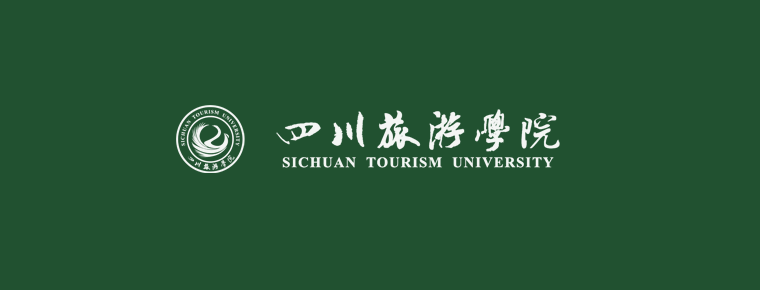Sichuan Tourism University
Sichuan Tourism University
Sichuan Tourism College is the first independent tourism undergraduate college in China. In 2018, it was approved by the Overseas Chinese Office of the State Council as the base of "Overseas Chinese Benefit Project - Chinese Food Prosperity Plan". As a pilot University of overall transformation and development reform of Sichuan undergraduate colleges and universities, the school adheres to the concept of "application-oriented, characteristic and open-ended", constantly deepens educational reform, inherits China's excellent culinary tourism culture, and cultivates applied talents adapted to social and economic development and the modernization of culinary tourism.
The main campus of the school is located at 459 Hongling Road, Longquanyi District, Chengdu City, Sichuan Province, covering an area of 637 mu. The campus has been built into a national AAA tourist attraction with elegant environment and pleasant scenery. The school has a track and field stadium, rock climbing stadium, comprehensive training hall for leisure sports, basketball court, volleyball court, golf practice court, beach volleyball court, tennis court, badminton court, swimming pool and other leisure sports facilities.
The school is based on management and engineering, supported and coordinated by economics, literature, pedagogy, art, science and other disciplines, focusing on the construction of the discipline system of "big tourism". There are more than 9000 full-time students, 4000 correspondence students and 6000 self-taught students. There are 11 secondary schools, such as Cuisine College, Food College, Hilton Hotel Management College, Sports and Leisure College, Tourism and Culture Industry College, Economic Management College, Foreign Languages College, Information and Engineering College, Art College, Marxist College and Continuing Education College. There are 22 undergraduate majors in cooking and nutrition education, food science and engineering, Hotel management, leisure sports, tourism management, building electrical and intelligent, landscape architecture, business English, logistics engineering, and other specialties with Chinese and Western cuisine, Golf and other characteristics.
The school has set up cooperative innovation centers for Sichuan cuisine industrialization and internationalization in 2011, cooperative innovation centers for enhancing the competitiveness of Sichuan-Tibet tourism industry in 2011, Sichuan cuisine development research centers, European and American food culture research centers, food processing and testing experimental teaching demonstration centers, western tourism development research centers, leisure agriculture and rural tourism research centers. Provincial and school-level scientific research and teaching experimental institutions such as the Accounting Center, the National Institute of Vocational Skills Appraisal and the Institute of Higher Education.
The school library has 950,000 books and 600,000 e-books. It has 22 categories of literature resources in five major categories. In particular, it has a full range of specialized libraries such as cooking, Hotel management, tourism management, leisure and sports.
The school currently has 460 full-time teachers, including 72 professors and 195 associate professors. Among the teachers, there are two experts who enjoy special allowances from the State Council, one national May 1 Labor medal, three winners of Sichuan May 1 Labor medal, one Sichuan Youth May 4 medal, one national technical expert, four experts from the Teaching Steering Committee of the Ministry of Education, four famous teachers in Sichuan Province, three excellent teachers in Sichuan Province and China Cuisine University. There are 9 teachers, 23 famous Chinese cooks, 1 famous Sichuan cooks and 6 baking masters in China; 10 academic and technological leaders and backup candidates in Sichuan Province, 4 outstanding experts with outstanding contributions in Sichuan Province, 1 National Talent Engineering Expert for millions of people, 1 expert for Sichuan's "Thousand Persons Plan", and 1 rural tourism training and regulation in Sichuan Province. There are 8 planning experts, 4 young tourism experts in Sichuan Province, 2 high-level overseas students and 8 poverty alleviation experts in Sichuan Province. The school has one national excellent teaching team, five provincial excellent teaching teams, two national excellent courses and 19 provincial excellent courses. Teachers in schools have reasonable structure and excellent quality, and their teaching and research abilities have been widely praised by the society.
Insisting on the integration of industry and education, school-enterprise cooperation and internationalization, the school is one of the 100 Application-oriented Undergraduate Universities in the construction of the project of integration of industry and education. There are hundreds of high-quality Industry-Education integration enterprises in China, distributed in the Bohai Bay, Beijing-Tianjin-Tang, Yangtze River Delta, Pearl River Delta, Chengdu-Chongqing and other economically developed regions; in foreign countries, there are exchanges between Perugia University of Italy, Thai Chamber of Commerce University, Royal Xuandushi University of Thailand, Dukai Hotel Management College of France, Toulouse Hotel Management College, etc. Students, exchange students training, Bachelor's degree, Master's degree and other projects at the University of Edinburgh, UK. There are international cruise, Singapore, the United Arab Emirates, Qatar, Australia, the United States and other paid internship and employment projects overseas. The world famous Hilton Hotel Management Group has cooperated with our school to establish the second Hilton Hotel Management School in the world.
After years of construction and development, the school has made remarkable achievements in personnel training, scientific research, social services and cultural inheritance and innovation. Teachers and students gather wisdom and take responsibility bravely, strive hard to build the university into a distinctive and first-class application-oriented tourism undergraduate university, to build a well-off society in an all-round way, to satisfy people's yearning for a better life, food safety and high-quality tourism.


-
1.National Palace Museum Taipei
Taipei national the Imperial Palace Museum, also known as the Taipei the Imperial Palace and Zhongshan Museum. It is one of the three major museums in China and one of the largest comprehensive museum
Time 2018-10-12 -
2.Pumpkin rice gruel
cut Pumpkin Peel into thin slices and rinse with millet. Put some water in the pot, put water into pumpkin millet and boil it in a big heat.
Time 2018-11-02 -
3.Lingyun Mountain Scenic Area
Lingyun Mountain Scenic Spot is located in Gaoping District of Nanchong City, with an area of 20 square kilometers and a total investment of 300 million yuan. The scenic spot is dominated by Lingyun M
Time 2018-12-26 -
4.Hefei Intangible Cultural Heritage Park
Hefei Intangible Cultural Heritage Park project is located in Changfeng County, Hefei City, China. The project covers an area of about 3500 mu, with a total investment of 500 million yuan and a constr
Time 2019-01-13 -
5.Kaiyuan Cave Tourist Area Zibo
The karst cave in Kaiyuan is named for the cliff stone carvings in Kaiyuan period of Tang Dynasty. It is large and tall with a length of more than 1100 meters. It is divided into six halls. The natura
Time 2019-03-21 -
6.Firing Techniques of Longquan Celadon
Longquan celadon firing technology, the traditional ceramic technology of Longquan City, Lishui, Zhejiang Province, is one of the national intangible cultural heritage.
Time 2019-05-14 -
7.Shangdang Bayin Club
Shangdang Bayin Club is a kind of traditional folk wind and percussion music, which is widely spread in Changzhi and Jincheng in southeastern Shanxi Province.
Time 2019-06-13 -
8.Shiwan Ceramic Sculpture Technology
Shiwan pottery sculpture has a long history. It first appeared in the Eastern Han Dynasty. It reached its peak in the Song Dynasty. After the founding of New China, the manufacturing level and artisti
Time 2019-06-15 -
9.Yanbei Playing with Children
Yanbei children's play, also known as cough cavity, is popular in Datong City, Shanxi Province and its surrounding traditional drama, one of the national intangible cultural heritage.
Time 2019-07-10 -
10.Empress Dowager Ci Xi
Ci Xi (November 29, 1835 - November 15, 1908) is the queen of Xiao Qin chin. Yehiel Bernard La Shi, Xianfeng Emperor Concubines, Tongzhi Emperor The birth mother. Important in late Qing Dynasty Politi
Time 2019-09-07 -
11.Liubeichi Park
Liubeichi park is located at No.4 Minjiang East Road, Yibin City, with an area of 238.18 mu. It is a national AAAA tourist attraction. It is a famous scenic spot and a key Park in Sichuan Province.
Time 2020-10-16 -
12.Yibin medical and health
By the end of 2019, there are 5120 medical and health institutions in Yibin City, including 135 hospitals (102 private hospitals); 4945 primary medical and health institutions, including 177 township health centers, 46 community health service centers (stations),
Time 2020-12-18